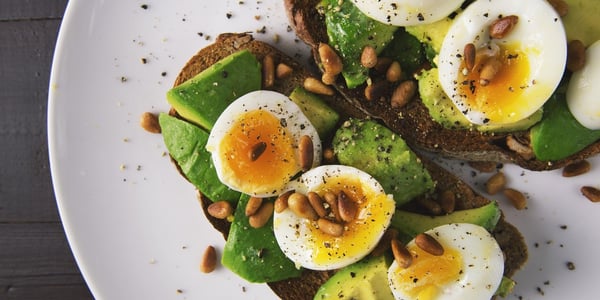Beyond the confines of grocery stores and farmers' markets lies a vast wilderness brimming with...


Beyond the confines of grocery stores and farmers' markets lies a vast wilderness brimming with...

In today's fast-paced world, we often find ourselves feeling tired and drained by mid-day,...

Eating out is commonly one of the most enjoyable parts of our day. It can be a nice break from our...

America's culinary landscape is as diverse as its geography, with each state boasting its own...
How to Cut Processed Foods Out of Your Diet
We all know processed foods are convenient—and let’s face it, sometimes they’re hard to avoid. But more and more research is showing that regularly relying on them can take a serious toll on your health. What might seem like an easy option in the moment can quietly contribute to bigger issues down the line. It’s worth understanding what’s really in these foods and how they affect your body, so you can make choices that support your long-term well-being.Understanding Processed Foods
Before we discuss how to eliminate processed foods, it's important to understand what they are. Processed foods are any foods that have been altered from their natural state for safety or convenience reasons. These can range from minimally processed items like bagged spinach or roasted nuts to heavily processed foods like frozen dinners, chips, and sodas.
The main issues with heavily processed foods include:
Benefits of Cutting Out Processed Foods
Eliminating or significantly reducing processed foods from your diet can lead to numerous health benefits:
Cutting out processed foods is a long game—so is saving.
Click here or the button below to open a certificate with Flagler Credit Union!
10 Steps to Cut Processed Foods from Your Diet
1. Gradually Replace Processed Foods with Whole Foods
One of the most effective ways to cut out processed foods is to replace them with whole-food alternatives slowly. This gradual approach can make the transition more sustainable and less overwhelming. Identify the processed foods you consume most frequently and find whole-food substitutes.
For example:
2. Read Labels Carefully
Become a label detective. Many foods that appear healthy at first glance may actually be highly processed. When shopping, read ingredient lists carefully. A good rule of thumb is choosing products with fewer ingredients and ones you can easily pronounce and recognize.
Look out for:
3. Cook More Meals at Home
One of the best ways to control what goes into your food is to prepare it yourself. Cooking at home allows you to use whole, unprocessed ingredients and control portion sizes. Start by cooking a few meals a week and gradually increase as you become more comfortable in the kitchen.
Tips for home cooking:
4. Shop the Perimeter of the Grocery Store
The outer edges of most grocery stores typically contain the freshest, least processed foods. You'll find fruits, vegetables, meats, fish, and dairy products here. Try to do the majority of your shopping in these areas and limit your time in the center aisles, which often contain more processed options.
5. Choose Whole Grains Over Refined Grains
Refined grains, such as white bread, pasta, and rice, have been stripped of many nutrients during processing. Opt for whole grain alternatives, which retain more nutritional value and provide more fiber.
Whole grain options include:
6. Snack on Whole Foods
Processed snacks are often a significant source of added sugars, unhealthy fats, and empty calories. Replace these with whole-food snacks that provide more nutrients and keep you feeling fuller for longer.
Healthy snack ideas:
7. Stay Hydrated with Water
Sugary drinks, including sodas and many fruit juices, are a significant source of empty calories and added sugars. Replace these with water as your primary beverage. If you find plain water boring, try infusing it with fresh fruits, herbs, or cucumber slices for added flavor.
8. Plan Ahead for Busy Days
One of the main reasons people turn to processed foods is convenience, especially on busy days. To combat this, plan ahead and prepare healthy options in advance.
Ideas for quick, healthy meals:
9. Be Mindful of Restaurant Meals
Eating out can be challenging when trying to avoid processed foods, as many restaurants rely heavily on pre-made, processed ingredients. When dining out, choose restaurants that prepare food from scratch, and don't be afraid to ask questions about how dishes are prepared.
Tips for eating out:
10. Allow for Occasional Treats
It's important to remember that completely eliminating all processed foods may not be realistic or sustainable for everyone. Allow yourself the occasional treat to prevent feelings of deprivation, which can lead to binge eating or giving up on your healthy eating goals altogether.
The key is to make these treats occasional and mindful rather than daily habits. When you do indulge, truly savor and enjoy the experience.
Overcoming Challenges
Cutting out processed foods can come with its share of challenges. Here are some common obstacles and how to overcome them:
Time Constraints
Many people rely on processed foods because they're quick and convenient. To overcome this:
Cost Concerns
While some whole foods can be more expensive than their processed counterparts, there are ways to eat healthily on a budget:
Cravings for Processed Foods
As you transition away from processed foods, you may experience cravings. To manage these:
Social Situations
Social events and gatherings often center around food, much of which may be processed. To navigate these situations:
Cutting back on processed foods doesn’t have to mean an overnight overhaul—but even small changes can add up to a big difference. Paying closer attention to what you eat, making more whole-food choices, and sticking with it over time can have a real impact on how you feel, both now and in the long run. It’s not about being perfect—it’s about being intentional. Every better choice is a step toward feeling healthier and more energized.
Whole-food choices support your health—solid savings choices support your future.
Click here or the button below to open a Boost Savings Account with Flagler Credit Union!
Living50+